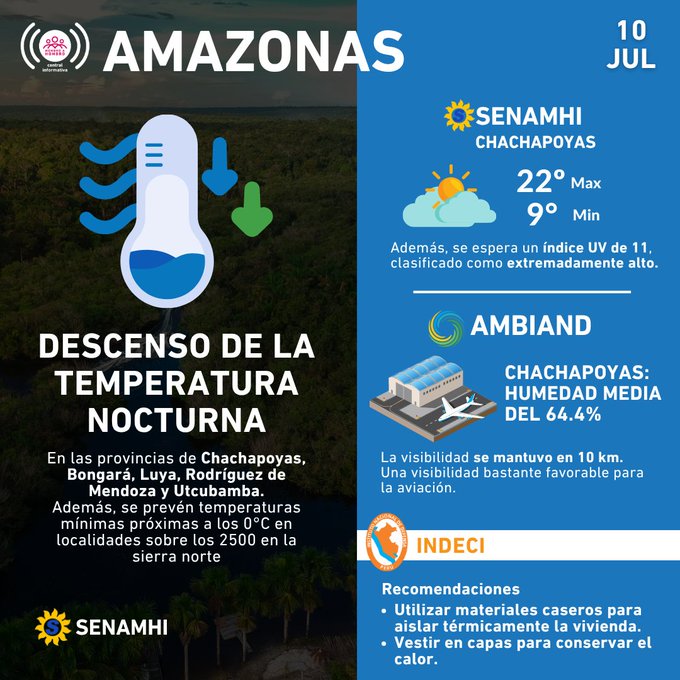In a recent update for the region of Amazonas in South America, a notable drop in nighttime temperatures has been recorded in various areas including Chachapoyas, Bongará, Luya, Rodríguez de Mendoza, and Utcubamba.
The minimum temperature reported stands at 9°C, while the maximum reaches 22°C, accompanied by a high UV index of 11 and a moderate average humidity of 64.4%.
This shift in weather patterns has sparked interest and concern among locals and authorities alike, as they adapt to the changing climate dynamics in the region..
The fluctuation in temperatures in the Amazonas region is not uncommon, as the area experiences diverse weather conditions due to its tropical rainforest climate.
With the onset of seasonal changes, residents have been urged to take necessary precautions to mitigate any potential health risks associated with temperature variations.
The local meteorological department continues to monitor these developments closely to provide timely updates and guidance to the community..
The impact of these temperature changes extends beyond mere discomfort, as it can affect agricultural practices, wildlife behavior, and overall ecosystem dynamics in the region.
Farmers and local communities may need to adjust their farming practices and routines to accommodate the shifting climate patterns and ensure sustainable livelihoods.
Additionally, wildlife conservation efforts may need to be intensified to protect vulnerable species in the face of changing environmental conditions..
Looking ahead, it is crucial for residents of Amazonas to stay informed about weather forecasts and heed any advisories issued by authorities to safeguard their well-being.
By fostering a proactive approach towards climate resilience and adaptation, communities can better cope with the challenges posed by unpredictable weather patterns.
As climate change continues to impact regions worldwide, staying vigilant and prepared is essential for fostering a sustainable future in the Amazonas region and beyond..









Leave feedback about this